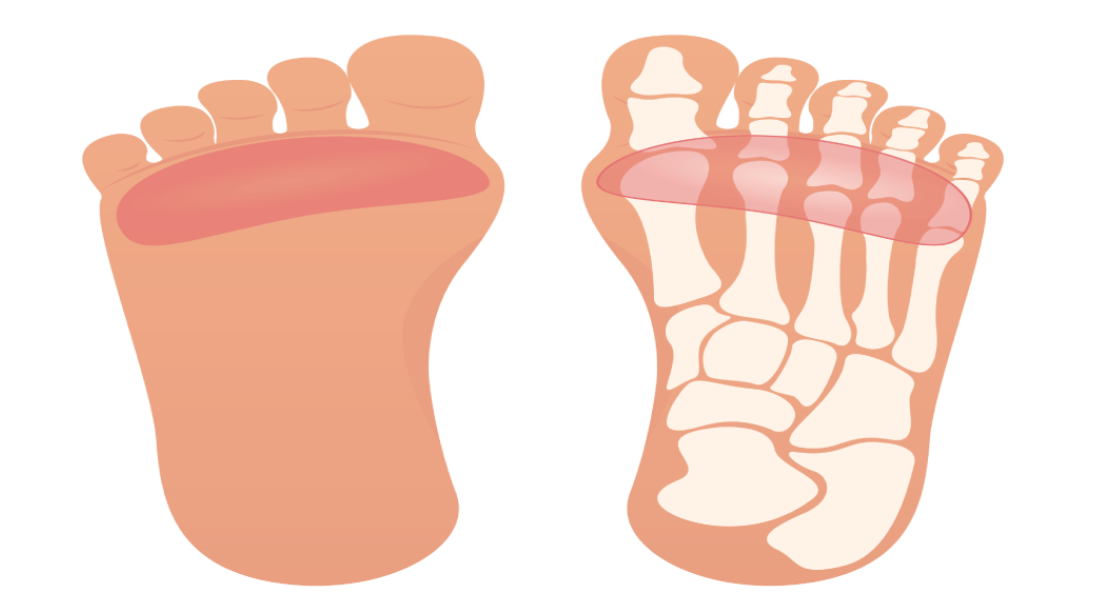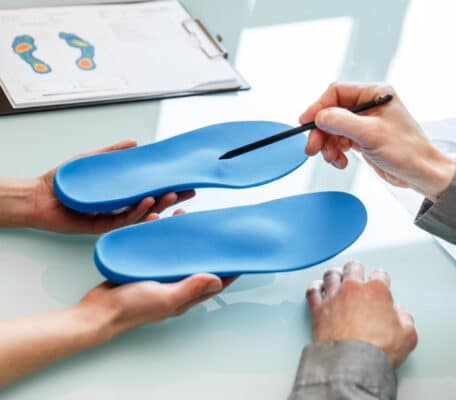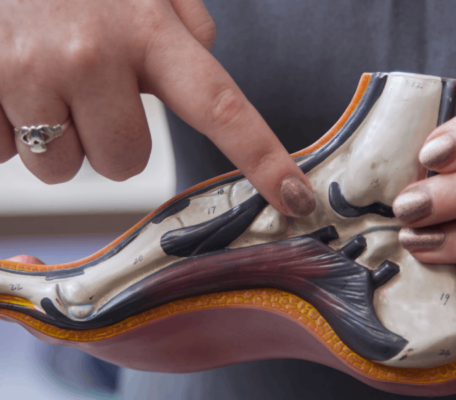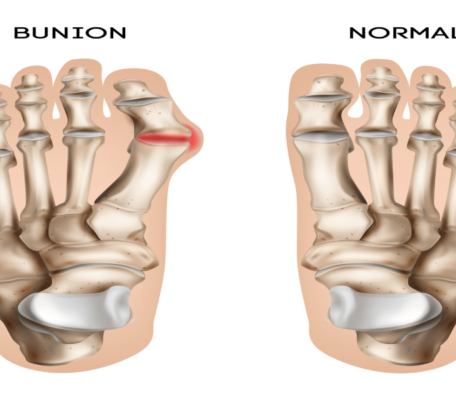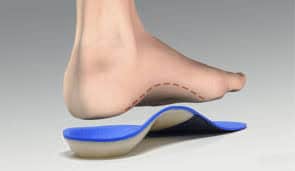Perhaps you haven’t heard of it, but Morton’s Neuroma is one of the most common causes of pain in the ball of your foot. If you’re suffering from foot pain, but you’re not sure what the problem is, Morton’s Neuroma could be the cause.
At Foot Solutions, we believe good health starts from the ground up. The health of your feet impacts on everything else, from your balance to your posture, the health of your back and legs, and your mobility. We look at health holistically, and see how a simple correction to someone’s footwear or foot care routine can revolutionize their overall wellbeing.
If you are suffering from ongoing pain in your feet, it’s a good idea to see a foot specialist. A condition like Morton’s Neuroma is hard for a layperson to diagnose, but it’s important to catch and treat foot pain before it becomes severe, in order to stand the best chance of restoring your health.
Perhaps you are concerned you might be developing Morton’s Neuroma symptoms. At Foot Solutions, we are experts in all things feet. Here’s our expert guide to what you need to know about Morton’s Neuroma.
What is Morton’s Neuroma?
Morton’s Neuroma is a condition of the feet where the tissue in the toe has thickened. Also known as intermetatarsal neuroma, the thickened tissue puts pressure on the nerves in your foot. This irritates the nerve and causes pain.
Morton’s Neuroma occurs most frequently between the third and fourth toes, affecting the common plantar digital nerves.
What are the symptoms of Morton’s Neuroma?
Morton’s Neuroma symptoms involve burning pain near the ball of the foot. There is no visible sign of the condition, which is likely to start out as a slight tingling. Tingling is likely to increase to shooting or burning pain, and you may feel as though there is a pebble in your shoe or your socks are bunched up.
Other symptoms of Morton’s Neuroma can include numb toes, and increased pain while walking. The pain should ease off overnight.
What causes Morton’s Neuroma?
Morton’s Neuroma is caused by irritated or damaged nerve tissue. This irritation can be created by:
-
Compression of the nerve
-
Trauma to the feet, especially around the nerve area
-
Existing foot conditions, such as flat feet, high arches, hammertoes or other foot deformities.
-
High impact activities, such as sports, that put a lot of stress on the feet.
-
Lifestyle choices, such as wearing high heeled shoes, tight shoes, narrow shoes, or shoes with thin soles.
How can you prevent Morton’s Neuroma?
While the development of Morton’s Neuroma might be beyond your control, there are certain actions you can take to make it less likely.
If you begin to feel any pain in your feet, take immediate action. Stop doing anything that might be affecting the nerve tissue (especially that around the third and fourth toes), such as hiking, running and high impact sports. Instead, focus on more holistic activities such as swimming.
Make sure you are wearing shoes that are comfortable and fit well, with a wide toe box.
How can you get Morton’s Neuroma diagnosed?
It can be tricky to diagnose Morton’s Neuroma. With no visible symptoms, it can be hard to be sure what the real issue is. This makes it particularly important to visit your doctor if pain continues.
Specialist foot doctors and foot and ankle surgeons will recognise the problems Morton’s Neuroma can cause, and will use certain techniques to achieve a full diagnosis.
Medical history
Your doctor will ask you about your general foot health, how long you have had your symptoms for, and how they have developed.
Physical examination
It’s likely your doctor will conduct a physical examination, feeling your foot for the tender spot. If you can feel a clicking sensation between the toes, this can be a symptom of Morton’s Neuroma too.
As part of the physical exam, you may be asked to perform a series of movements. This way the doctor can tell if there could be another issue with your foot that is causing your pain, such as arthritis.
X-ray
Your doctor may use an x-ray to rule out other problems such as bone fractures that could be at the root of the issue.
Ultrasound
Ultrasound is a way to examine the soft tissues in your body, which is particularly useful for diagnosing a condition such as Morton’s Neuroma. Magnetic resonance imaging (MRI scanning) could also be used to assess for Morton’s Neuroma, but it is an expensive test and so not usually needed for less serious cases.
How can you treat Morton’s Neuroma at home?
Initial treatment can be conducted at home.
The right shoes
Switch from high heels to supportive shoes with a wide toe box, and don’t wear tight shoes or anything constrictive on your feet.
Rest
Put your feet up! It can do the world of good to simply take the pressure off by sitting down. Once you have rested the affected area, there are other simple home treatments you can try.
Ice massage
Ice massage can work wonders, cooling inflammation, helping reduce pain, and soothing your feet.
Ibuprofen
Calm moderate pain with anti-inflammatories such as ibuprofen – seek your doctor’s advice before self medicating.
Weight loss
If you need to lose weight, try to implement some actions to make it happen. Taking the strain out of your feet in this way could be a great long term solution for your foot pain. Try gentle holistic exercise such as swimming, which doesn’t put your metatarsal bones or the affected nerve under any extra strain.
Physiotherapy
Physical therapy can sometimes be recommended. A physiotherapist will be able to show you the right exercises to strengthen your feet and ease pain in the ball of your foot through stretching.
What further treatment is there for Morton’s Neuroma?
In some cases, Morton’s Neuroma will need further treatment.
An assessment by a specialist such as Foot Solutions can be a great first step. They may recommend supporting the affected nerve with shoe inserts, to give extra cushioning to the metatarsal bones. They would be aiming to reduce the pressure on your foot and metatarsal pads.
In the most severe cases, your doctor may move on to suggesting more aggressive treatments.
Steroid cortisone injections are a way to manage more serious pain. You may also be given injection therapy in the form of a local anesthetic injection to the toe, in order to numb the area.
Cold therapy is also a useful option. By killing some of the nerve cells in the affected area using very cold temperatures, the nerve no longer feels as much pain. This is a highly effective treatment particularly good at preventing a reoccurrence of Mortons Neuroma.
Some sufferers may require surgical treatment. Decompression surgery aims to reduce pressure on the damaged nerve. In the most severe cases, and if all other options have failed, your foot and ankle surgeon may suggest a neurectomy – removing the entire affected nerve.
Who is affected by Morton’s Neuroma?
Women are disproportionately affected by Morton’s Neuroma, with the condition being four times more likely in women than in men. This is likely because more women wear high heeled shoes, pointed toe shoes, and uncomfortable footwear.
The average age of presentation for Morton’s Neuroma is between 50 and 55 years.
What should you do if you have Morton’s Neuroma?
If you think you may have Morton’s Neuroma, it’s well worth dropping into your local Foot Solutions store. Our friendly teams of specialists will be able to suggest practical conservative treatments that could solve your problem without the need to visit doctors or foot and ankle surgeons.
While some people need medical intervention or even foot surgery, in many cases Morton’s Neuroma is a condition that responds really well to lifestyle changes and self-care. At Foot Solutions, we offer a range of beautifully curated specialist footwear that can give your feet the support they need to return to full health.
Foot and ankle care is our priority, so before you ring the foot and ankle surgeon, come to Foot Solutions today. Let us reset your health from the ground up.

